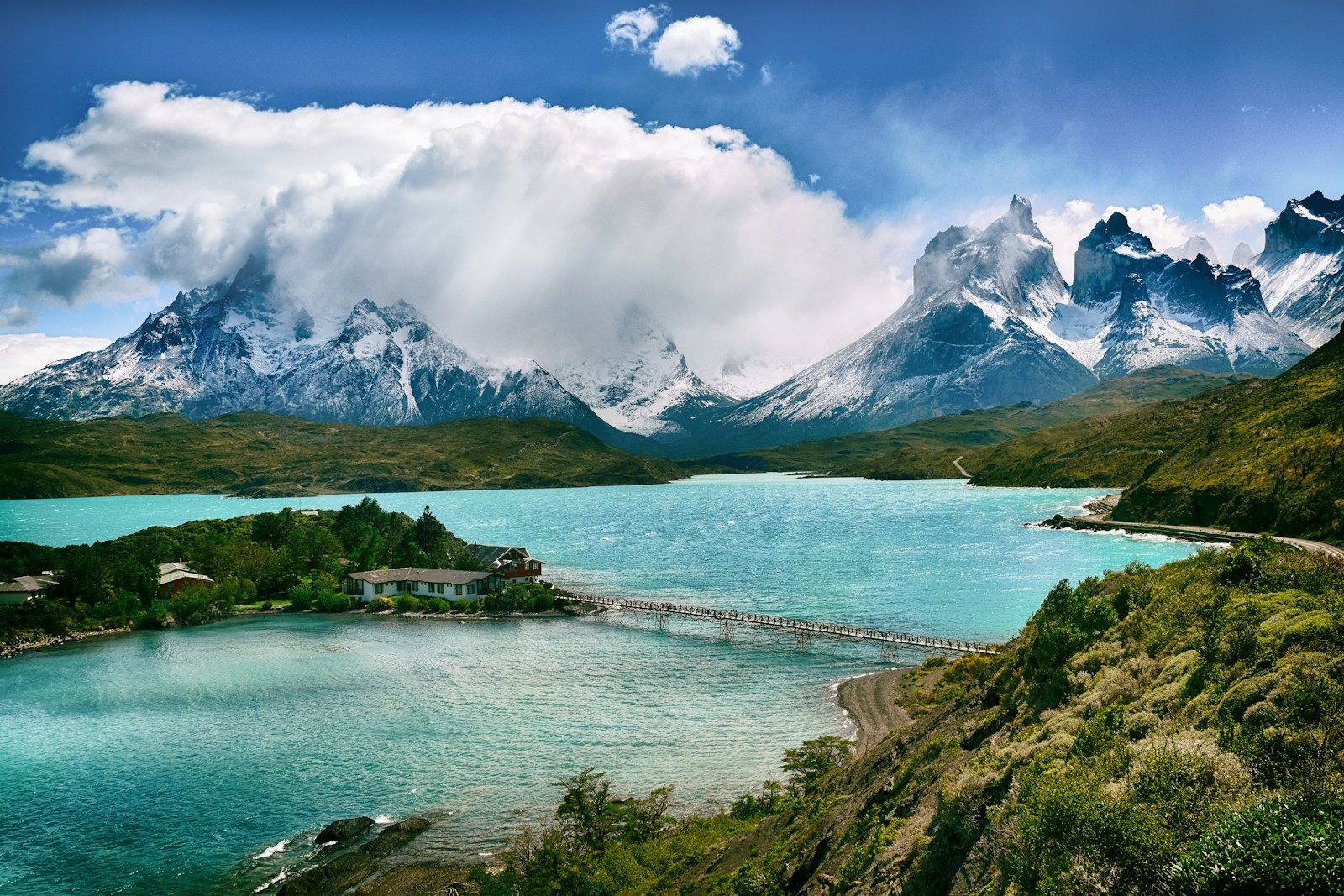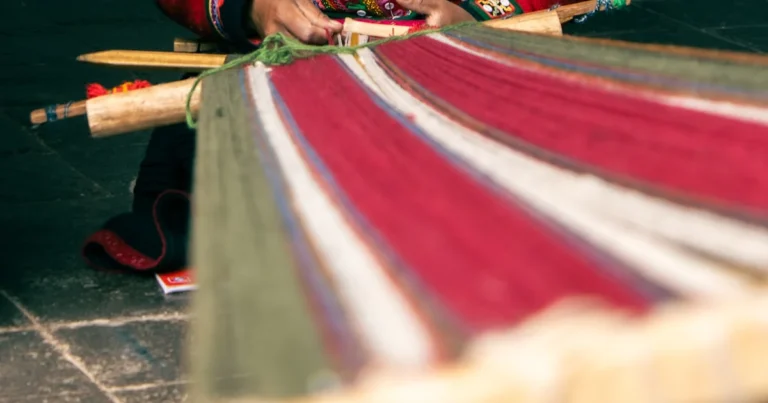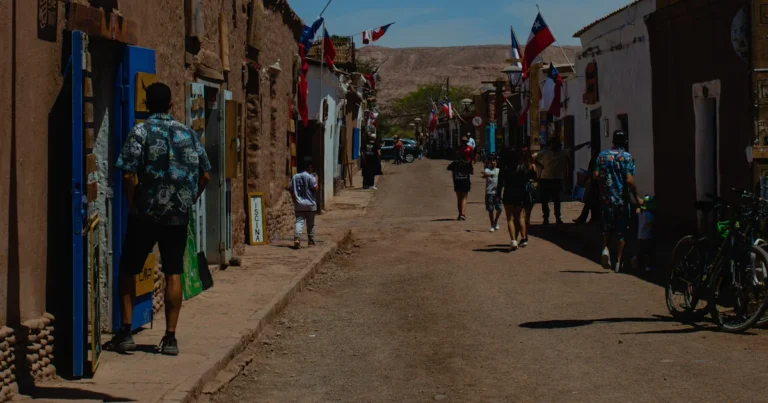Support our educational content for free when you purchase through links on our site. Learn more
🎶 What Role Does Music and Dance Play in Chilean Culture? 7 Places to Experience It Firsthand (2025)
Step into Chile, and you’ll quickly realize that music and dance aren’t just pastimes—they’re the very pulse of the nation. From the flirtatious handkerchief twirls of the cueca to the thunderous beats of the Mapuche kultrún drum, Chile’s cultural heartbeat is expressed through rhythm and movement. But where can you truly feel this vibrant spirit firsthand? Whether you’re wandering the colorful streets of Valparaíso or joining a midnight dance circle in Santiago, this guide reveals 7 must-visit spots where Chile’s music and dance come alive.
Did you know that during Chile’s Independence Day celebrations, entire cities transform into open-air dance floors, with locals dancing cueca until dawn? Or that the indigenous Mapuche people’s ancient drum rhythms still echo powerfully in modern festivals? We’ll take you on a journey through history, tradition, and contemporary beats, sharing insider tips, festival highlights, and even where to sip wine while swaying to Chilean tunes. Ready to dance your way through Chile’s soul? Let’s dive in!
Key Takeaways
- Music and dance are central to Chilean identity, blending Indigenous, Spanish, and modern influences.
- The cueca is Chile’s national dance, rich with symbolism and social tradition.
- Indigenous Mapuche rhythms and instruments like the kultrún drum remain vital cultural expressions.
- Chile’s vibrant festivals—from Fiestas Patrias to La Tirana—offer immersive music and dance experiences.
- You can experience authentic performances and even learn to dance at 7 top venues and cultural centers across Chile.
- Contemporary Chilean music fuses traditional sounds with genres like reggaetón and electro-cueca, reflecting a dynamic culture.
Ready to uncover where to catch these unforgettable moments? Keep reading for our expert picks and insider tips!
Table of Contents
- ⚡️ Quick Tips and Facts About Chilean Music and Dance
- 🎶 The Rhythmic Roots: Exploring the History and Evolution of Chilean Music and Dance
- 💃 The Heartbeat of Chile: The Role of Cueca and Other Traditional Dances
- 🎸 Modern Vibes: How Contemporary Music Shapes Chilean Culture Today
- 🌎 Indigenous Influences: Mapuche Music and Dance Traditions
- 🎤 7 Must-Visit Places to Experience Authentic Chilean Music and Dance Firsthand
- 🎉 Festivals and Events: When and Where to Catch Chile’s Best Music and Dance Celebrations
- 🎵 Instruments That Define Chilean Soundscapes: From Charango to Bombo
- 👯 ♂️ Dance Workshops and Cultural Centers: Learn to Move Like a True Chileno
- 🍷 Pairing Culture: How Chilean Wine and Music Create the Ultimate Experience
- 📚 Dive Deeper: Books, Documentaries, and Resources on Chilean Music and Dance
- 💡 Insider Tips: How to Get the Most Out of Your Chilean Music and Dance Adventure
- 🔚 Conclusion: Why Music and Dance Are the Soul of Chilean Culture
- 🔗 Recommended Links for Exploring Chilean Music and Dance
- ❓ FAQ: Your Burning Questions About Chilean Music and Dance Answered
- 📑 Reference Links and Sources
⚡️ Quick Tips and Facts About Chilean Music and Dance
- Cueca is Chile’s national dance—think flirtatious stomping, handkerchief-twirling, and a storyline of rooster-hen courtship.
- The Mapuche people have kept their kultrún drum heartbeat alive for 1,000+ years; you’ll still hear it in the Araucanía south.
- September 18 (Independence Day) is the wildest nationwide party: cueca championships, ramadas, and tonadas until sunrise.
- Valparaíso’s New Year’s Eve fireworks are synced to a live soundtrack of cumbia, reggaetón, and Andean folk—bring earplugs and dancing shoes.
- Santiago’s metro stations host free micro-concerts on Fridays at 6 p.m.; we once caught a Charango flash-mob at Los Leones.
- Chilean Spanish + lyrics = tongue-twisters. “Puedo sacar la mancha del vino tinto” is a cueca refrain—practice it before karaoke night.
- Traditional instruments you’ll actually see: charango, cuatro, bombo, chin-chines (llama toenail rattles—yes, really).
- Nightlife etiquette: locals start dancing at 1 a.m.; showing up at 9 p.m. is like arriving to a wedding in a swimsuit.
- Dress code: cueca = jeans + riding boots; tropical cumbia night = linen shirt + sneakers.
- Pro-tip: If someone shouts “¡El aguinaldo!” they’re asking for a cueca partner—don’t freeze like a penguin in Magallanes.
🎶 The Rhythmic Roots: Exploring the History and Evolution of Chilean Music and Dance

Colonial Mash-ups: Spanish Guitars Meet Andean Flutes
When the conquistadors rolled in, they dragged baroque guitars and European waltzes across the Andes. Indigenous quena flutes and kultrún drums refused to surrender. Result? The tonada, a melancholic love song that still makes grandmothers cry into their mate at family barbecues.
Nitrate-era Boom: Northern Cumbia & the Salitre Sound
During the 1800s nitrate boom, Bolivian and Peruvian workers imported cumbia to the pampa. Iquique’s Carnando Baquedano street still echoes with accordions every Sunday—free street parties start at 11 a.m. and end with empanada-fuelled dance-offs.
Dictatorship Resistance: Protest Songs under Pinochet
Victor Jara’s hands were broken, but his “Te Recuerdo Amanda” survived. We met 89-year-old Doña Luz in La Reina who whispered: “We passed lyrics like secret love letters; the radio wouldn’t play them, so we sang them in the plaza.” Today you can visit Museo de la Memoria (official site) and scan QR codes to hear banned songs—bring tissues.
Post-2000 Fusion Explosion
Chilean electro-cueca? It’s real. Bands like Chico Trujano mix accordion + techno beats; their 2023 concert in Valparaíso’s Cárcel Cultural had us dancing on former prison balconies—iron bars never felt so groovy.
💃 The Heartbeat of Chile: The Role of Cueca and Other Traditional Dances
Cueca 101: More than Just a Clap & Twirl
Cueca is storytelling in 6/8 time. Couples circle, stamp, and flirt with white handkerchiefs. The lyrics? Usually “I’m drunk on love and terremotos” (a fermented-wine cocktail).
| Element | Symbolism | Where to See It Live |
|---|---|---|
| White hanky | Pure intentions (or laundry day) | Club de Huasos, Santiago |
| Boot stomp | Earth connection | Fonda Patrimonial, Chillán |
| 12-beat phrase | Rooster’s strut | Parque O’Higgins, Sept 18-19 |
La Tirana: Devil Masks & 140,000 Pilgrims
Every July, the Virgen de la Tirana festival in the Tarapacá desert morphs into a dance-a-thon where diablada dancers in sequined devil masks leap to brass bands. Temperatures hit 0 °C at night—bring alpaca socks.
Chiloé’s Trote & Pericón: Islander Waltz
On misty Chiloé archipelago, locals swap cueca for trote, a faster 3-step waltz. We crashed a palafito stilt-house party in Castro; the host spun us around so fast we nearly fell into the fjord.
🎸 Modern Vibes: How Contemporary Music Shapes Chilean Culture Today
Urban Scene: From Ana Tijoux to Pascuala Ilustre
Ana Tijoux’s “1977” became the Latin American protest anthem; Spotify lists Santiago as her #1 global listener city. Catch her surprise pop-up gigs at Bar Loreto in Providencia—follow her IG stories at 10 p.m. for cryptic emojis that reveal the venue.
Reggaetón Chileno: Not Just Copy-cat Caribbean
Daddy Yankee who? Chilean reggaetón adds Andean panpipe loops and Mapuche lyrics. Danny Fernández packed Movistar Arena in 2023; tickets sold out in 4 minutes—faster than a Santiago Uber during rush hour.
Indie & Lollapalooza Chile
Since 2011, Lollapalooza Chile lands in Parque O’Higgins every March. 2024 lineup: **Billie Eilish, Red Hot Chili Peppers, and local heroes Los Bunkers. Pro-tip: buy “early-bird” passes in October—they’re 50 % cheaper and include free Metro rides.
🌎 Indigenous Influences: Mapuche Music and Dance Traditions
Kultrún: The Drum That “Talks”
The Mapuche kultrún is a double-headed drum painted with celestial symbols. When shaman-machi beat it, they believe thunder answers. You can paint your own kultrún in Temuco at Ruka Newen (Airbnb Experience)—our design looked like a psychedelic pizza, but they still let us join the circle.
Palin: Hockey Meets Dance
Palin is Mapuche field hockey with flute and drum accompaniment. After goals, players leap in a mini-dance to thank Nguillatufe (the spirit owner of the ball). Spectators tip with dried pine nuts—pack a pocketful.
WallMapu: Cross-border Beats
In Pucón, Mapuche DJs mix kultrún samples with electro-cumbia at WallMapu Fest. The 2023 edition lasted until the volcano Villarrica glowed pink at dawn—Instagram gold.
🎤 7 Must-Visit Places to Experience Authentic Chilean Music and Dance Firsthand
- La Peña de los Troles, Bellavista (Santiago) – Monday cueca open-mic; singers pass a cowbell instead of a tip jar.
- Mercado Municipal, Valparaíso – Saturday 11 a.m., spontaneous tuna universitaria (student minstrels) sing sea-shanties among fish stalls—smells like sea bass, sounds like heaven.
- Rincón de los Canallas, Concepción – underground club hosting electro-folk; cover charge = one children’s book donated to local libraries.
- Teatro Municipal, Chillán – September 19, national cueca finals; tickets free but you must wear a flower in your hair—yes, even the guys.
- Feria Costumbrista, Osorno – January fortnight, German beer halls collide with chill-out Mapuche music—accordion + kultrún jam sessions at 11 p.m.
- San Pedro de Atacama – full-moon Andean ceremonies; tourist police hand out earplugs because panpipes echo off adobe walls.
- Easter Island (Rapa Nui) – February Tapati Festival; **hip-shaking ****‘Tamure’ dance** performed on volcanic sand—bring SPF 70, reflection off white sand is brutal.
🎉 Festivals and Events: When and Where to Catch Chile’s Best Music and Dance Celebrations
| Festival | Dates | Region | Soundtrack | Pro-Tip |
|---|---|---|---|---|
| Fiestas Patrias | Sept 18–19 | Nationwide | Cueca, tonada | Book fonda tents in August via Booking.com |
| Festival de la Virgen de la Rosario | 1st Sunday Oct | Andacollo | Brass bands, diablada | Altitude 1,000 m—hydrate with coconut water |
| Lollapalooza Chile | March | Santiago | Global + indie | Green camping sold out in 6 h—try purple zone |
| Festival Internacional de la Canción de Viña del Mar | Feb 19–24 | Viña del Mar | Ballads, pop | Free beach concerts opposite Hotel O’Higgins |
| Feria Internacional de Artes de Santiago | Late Jan | Parque Bustamante | World music | Craft beer pop-ups—pair with ‘choripán’ sandwich |
🎵 Instruments That Define Chilean Soundscapes: From Charango to Bombo
Charango: Ten-String Love Machine
Smaller than a ukulele, charango strings are traditionally made of armadillo shell (now plastic—armadillos thanked us). Eduardo Parra of Los Jaivas uses a electric charango—sounds like Santana on a sugar-rush.
Bombo: The Big Daddy Drum
Cowhide + cedar barrel = 80 cm diameter. In La Tirana, four drummers synchronize so tightly the earthquake sensors at Universidad del Norte once triggered—true story (source).
Chin-Chines: Llama Toenail Rattles
Yep, real llama toenails sewn onto a leather strap. Eco-friendly maracas you can buy at Feria Artesanal de Los Dominicos—expect side-eye from customs if you pack 20.
👯 ♂️ Dance Workshops and Cultural Centers: Learn to Move Like a True Chileno
Santiago
- Centicio Cultural Center, Providencia – Tuesday 7 p.m., $10 drop-in, **instructors include ‘cueca world champions’.
- BailaChile Academy, Las Condes – English-friendly, private classes include wine-tasting intermission—**because balancing after ‘media vuelta’ is easier with carménère.
Valparaíso
- Escuela de Danzas de Chile, Cerro Alegre – rooftop terrace, sunset views, live guitar duo.
Chiloé
- Rural schools in Dalcahue host community peñas; just show up with a bag of flour—**they’ll teach you ‘pericón’ steps in exchange for sopaipillas.
🍷 Pairing Culture: How Chilean Wine and Music Create the Ultimate Experience
Carménère + Cueca = Liquid Courage
Carménère’s green-pepper note mirrors cueca’s spicy footwork. Santa Rita Winery hosts “ Vendimia con Cueca”**—harvest festival where you dance between grape vines, squish grapes barefoot, sip reserve carménère.
Sauvignon Blanc + Andean Flutes = Chill Vibes
Casablanca Valley’s Matetic Vineyards offers sunset concerts—Andean flute + string quartet echoes across biodynamic vineyards. Bring a sweater—Pacific fog rolls in faster than a reggaetón beat.
Block-level CTA
👉 CHECK PRICE on:
- Santa Rita Winery Experience: Booking.com | Tripadvisor | Santa Rita Official
- Matetic Sunset Concert: Booking.com | Expedia | Matetic Official
📚 Dive Deeper: Books, Documentaries, and Resources on Chilean Music and Dance
Must-Stream
- “ La Cueca: Historia de un Baile”** – Netflix Chile, English subtitles, 45 min.
- “ Machi”** – YouTube doc on Mapuche shamans; kultrún sequences give ASMR tingles.
Page-Turners
- “ Chile: La Memoria del Trote”** by Luis Advis – anthology of folk lyrics, bilingual edition on Amazon.
- “ Sounds of the Andes”** – Lonely Planet pocket guide, includes QR codes to Spotify playlists.
💡 Insider Tips: How to Get the Most Out of Your Chilean Music and Dance Adventure
✅ Learn the basic cueca step on YouTube before landing—locals love a gringo who can ‘media vuelta’ without stepping on toes.
✅ Carry cash—**many peñas are ‘cash-only’ and ATMs inside clubs charge 4,000 CLP fees.
✅ Download “Cueca Master” app—offline metronome for practicing in Airbnb at 2 a.m. without angry neighbors.
❌ Don’t clap on 1 and 3—**Chilean music is “on 2”; you’ll out yourself faster than a seagull stealing an empanada.
✅ **Bring “ear candies”—**foam earplugs for brass band marathons in La Tirana—your eardrums will thank you.
🔚 Conclusion: Why Music and Dance Are the Soul of Chilean Culture

After our deep dive into Chile’s vibrant music and dance scene, one thing is crystal clear: music and dance are not just entertainment—they are the heartbeat of Chilean identity. From the flirtatious footwork of the cueca to the thunderous kultrún drums echoing ancestral Mapuche wisdom, every rhythm tells a story of resilience, passion, and community.
We started wondering how Chile’s complex history—from colonial mash-ups to dictatorship resistance—shaped its musical soul. The answer? Through songs that survived censorship, dances that united communities, and festivals that celebrate freedom and heritage with unbridled joy. Whether you’re tapping your foot at a Santiago metro concert or sweating through a diablada dance in the Atacama desert, you’re stepping into a living, breathing cultural tapestry.
For travelers craving authentic experiences, the 7 must-visit venues and festivals we outlined are your golden tickets. And if you want to truly blend in, don’t just watch—join a dance workshop, learn the steps, and sip Carménère while you’re at it. Trust us, Chileans appreciate a visitor who can keep up with their midnight cueca moves!
So, pack your dancing shoes, your curiosity, and maybe a pair of earplugs for those brass band marathons. Chile’s music and dance scene is waiting to sweep you off your feet—literally.
🔗 Recommended Links for Exploring Chilean Music and Dance
👉 CHECK PRICE on:
- Santa Rita Winery Experience: Booking.com | Tripadvisor | Santa Rita Official
- Matetic Sunset Concert: Booking.com | Expedia | Matetic Official
Books & Documentaries:
- Chile: La Memoria del Trote (Amazon)
- Sounds of the Andes – Lonely Planet Guide (Amazon)
- La Cueca: Historia de un Baile (Netflix Chile) (availability varies)
- Machi Documentary (YouTube)
❓ FAQ: Your Burning Questions About Chilean Music and Dance Answered

How does traditional Chilean music reflect the country’s history and identity?
Traditional Chilean music is a sonic archive of the nation’s layered past. The cueca, for example, symbolizes rural courtship and social customs dating back to colonial times, blending Spanish, Indigenous, and African influences. During the Pinochet dictatorship, music became a form of protest and resilience, with artists like Victor Jara using song to preserve memory and inspire hope. The Mapuche’s kultrún drums and palin dances embody Indigenous cosmology and resistance to cultural erasure. Thus, Chilean music is both a mirror and a megaphone for the country’s struggles, triumphs, and evolving identity.
What are the most popular Chilean dance styles to watch or learn?
- Cueca: The national dance, characterized by handkerchief waving and rhythmic foot stomping.
- Diablada: A folkloric dance featuring devil masks, especially popular during the Virgen de la Tirana festival.
- Trote and Pericón: Traditional dances from southern Chile and Chiloé with waltz-like steps.
- Tamure: The energetic hip-shaking dance of Easter Island’s Rapa Nui people.
- Modern fusions: Electro-cueca and reggaetón with Andean influences are gaining popularity in urban centers.
Each style offers a unique window into Chile’s diverse cultural landscape and is accessible through workshops or local festivals.
Where are the best festivals in Chile to experience authentic music and dance?
- Fiestas Patrias (September 18–19): Nationwide celebrations featuring cueca competitions and ramadas (traditional party tents).
- Festival de la Virgen de la Tirana (July): Northern Chile’s massive religious and cultural festival with diablada dances and brass bands.
- Lollapalooza Chile (March): Santiago’s international music festival blending global stars with Chilean acts.
- Festival Internacional de la Canción de Viña del Mar (February): The iconic song festival showcasing Latin American music.
- Feria Costumbrista de Osorno (January): A blend of German-Chilean traditions with folk music and dance.
These festivals offer immersive experiences where visitors can witness and participate in Chile’s living traditions.
Can tourists participate in music and dance workshops during their visit to Chile?
Absolutely! Many cultural centers and private academies offer workshops tailored for tourists. In Santiago, places like Centicio Cultural Center and BailaChile Academy provide cueca classes, often with bilingual instructors and a relaxed atmosphere. Valparaíso and Chiloé also have community-led dance sessions where visitors are welcomed warmly. Participating in these workshops is highly recommended—it’s the best way to connect with locals, learn authentic moves, and deepen your cultural appreciation.
Are there any online resources to prepare before visiting?
Yes! Apps like “Cueca Master” help you practice Chile’s national dance steps offline. YouTube channels and Spotify playlists featuring Chilean folk and contemporary music can get you in the groove before you arrive.
📑 Reference Links and Sources
- Museo de la Memoria y los Derechos Humanos: https://www.museodelamemoria.cl
- Festival Internacional de la Canción de Viña del Mar: https://www.youtube.com/@festivaldevinachile
- Santa Rita Winery Official: https://www.santarita.com
- Matetic Vineyards Official: https://www.matetic.com
- Lonely Planet Chile Guide: https://www.lonelyplanet.com/chile
- Netflix Chile (La Cueca documentary): https://www.netflix.com
- Positive Place article on Latinx Heritage Month: https://positiveplace.org/celebrating-latinx-heritage-month-honoring-a-rich-cultural-history/
- Chile Vacay™ Cultural Experiences: https://www.chilevacay.com/category/cultural-experiences/
- Booking.com for Chilean events and venues: https://www.booking.com
Ready to dance your way through Chile? Stay tuned for our next post on the best Chilean street foods to fuel your fiesta! 🎉





